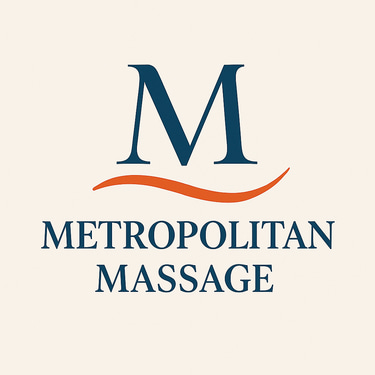The Wellness Station
Tools, tips, and resources to help you feel better at work — even after the massage ends.
1. Desk Stretch & Wellness Guide (PDF)
This single-page printable guide gives employees a quick, effective way to reduce tension and reset their posture during the workday. It includes five simple desk-based stretches, a posture checklist for healthier sitting, a one-minute “tension reset” routine for between meetings, and an easy hydration-and-movement formula designed for busy professionals. No equipment, no change of clothes — just practical wellness you can use at your desk.
2. Why Chair Massage Works
Chair massage may feel simple, but the physiological effects are surprisingly powerful — even in short sessions. When targeted pressure is applied to the neck, shoulders, back, and forearms, it stimulates both the circulatory and lymphatic systems. That increased blood flow brings more oxygen and nutrients to tight muscle fibers, helping them release tension and recover more quickly from posture strain, computer work, and repetitive motion.
At the same time, massage activates the parasympathetic nervous system — the “rest and restore” mode of the body. This shift lowers stress hormones like cortisol and adrenaline, while boosting endorphins, serotonin, and dopamine. The result is a measurable change in mood, muscle tone, and mental clarity.
The benefits aren’t just theoretical. Workplace wellness studies consistently show that 10–15 minutes of focused chair massage can reduce muscular tension by up to 40%, improve range of motion, and create a noticeable drop in perceived stress levels. Employees also report sharper focus and improved problem-solving for the next 2–4 hours, which is why chair massage is now used not only for wellness fairs, but before presentations, during conferences, and as part of employee retention programs.
Unlike table massage, chair massage requires no disrobing, no oils, no private room, and no scheduling disruption — making it one of the most efficient wellness tools a workplace can offer.
Small time investment. Big physiological payoff.
(Source: Journal of Alternative & Complementary Medicine, Workplace Wellness Review)
Additional interesting reading:
The ROI of Relaxation: What Corporate Wellness Should Really Look Like
From Burnout to Buy-In: How Chair Massage Improves Employee Engagement
3. The 20-8-2 Movement Rule
Sitting isn’t the problem — sitting without interruption is. Research from ergonomics and occupational health fields has led to a simple formula that helps counteract the effects of long desk time: 20 minutes sitting, 8 minutes standing, 2 minutes moving.
This rhythm gives the body alternating loads, which keeps blood flow active, reduces stiffness in the hips and low back, and prevents the “static posture fatigue” that builds up when you lock into one position for too long. The 2-minute movement segment doesn’t need to be exercise — a slow walk to refill water, calf raises while waiting on a print job, pacing during a phone call, or even stretching at your desk all count.
People who follow this cycle report better energy, fewer afternoon crashes, and reduced neck and back discomfort. The best part: you don’t have to overhaul your workday — just break up the stillness.
4. Eye Strain Reset: The 20-20-20 Rule
Screens force the eyes to maintain constant near-focus, which tires the tiny ciliary muscles that control your lenses. Over time, this contributes not just to eye strain, but to headaches, neck tension, and “brain fog.” The 20-20-20 rule is a science-backed reset: every 20 minutes, look at something at least 20 feet away for 20 seconds.
That short shift relaxes the eye muscles, rehydrates the cornea through blinking, and interrupts the neurological strain that builds up during screen-heavy work. Since most people blink 50% less while using devices, this rule also prevents dryness and irritation.
Pro tip: pair it with posture. Every time you do a 20-20-20 reset, also roll your shoulders back and breathe deeply — it trains both the eyes and the upper body to reset together.
5. Micro-Breaks Beat Long Breaks
Most employees think they need a long break to feel better, but studies show the opposite: the body responds best to frequent micro-breaks lasting 30–90 seconds. These tiny pauses lower muscle load on the neck and shoulders, improve blood oxygen, and boost alertness without disrupting concentration.
Instead of waiting until lunch to decompress, sprinkle micro-breaks between tasks: shoulder circles before a meeting, wrist stretches after typing, standing during a phone call, or simply closing your eyes and breathing deeply for 5 slow breaths.
The key is frequency, not intensity. Short resets throughout the day prevent tension from building into headaches, stiffness, or burnout — and they’re easy to do without leaving your workspace.


